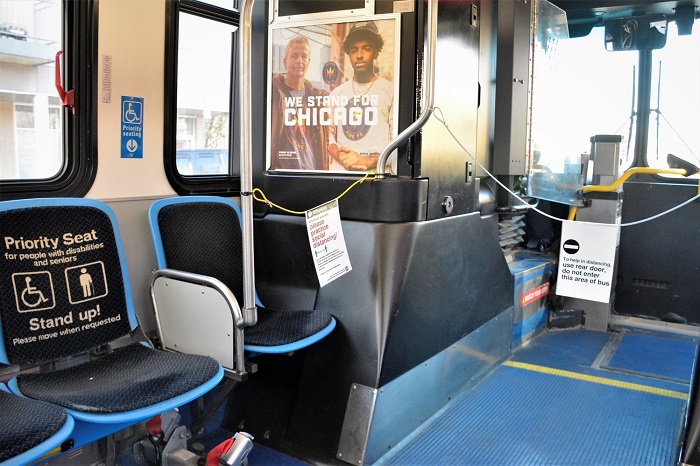Since March, the Active Trans Bus Organizing Fellows have been conducting online surveys with essential workers from historically marginalized communities who depend on public transit to get to their jobs. The survey examines the demographics of these workers, the condition of the buses, and the speed and reliability of the routes they take. This is one of a series of articles sharing the results of these surveys.
For people who must rely on transit during the COVID-19 crisis, it’s not an easy task trying to maintain physical distancing and protecting themselves from coronavirus. Among the riders we’ve been surveying, numerous concerns have been brought up about transit agencies’ lack of transparency and lack of steps taken to ensure safety for riders.
Here are some results from two in-depth interviews with survey respondents, as well as some general feedback we’ve received, and some potential solutions to make transit a safer experience during the COVID-19 pandemic.
- While we’re glad that Pace has joined CTA with requiring passengers to board through the back door of a bus, unfortunately, not all Pace buses are equipped with a back door. Having only one entrance means people must enter by the bus driver, and I have seen some issues with people trying to enter and exit at the same time. A solution to this would be taking the Pace buses with only one door out of service. This should be feasible to do considering a lot of Pace routes have been temporarily suspended. This would increase the feeling of safety and security for drivers and riders alike.
- It’s difficult to get a good picture of what six feet apart looks like at crowded bus stops, especially at ones that already see high ridership like, for example, the 79th and State Street stop. Something as simple as having markers on the ground every six feet can help remind people what adequate distance looks like.
- One woman I interviewed has a disability that makes it necessary for her to use the ramp at the front door of buses. She’s a graduate student living in the Back of the Yards neighborhood and typically relies on the 62 Archer and 47 Lake Park buses, in addition to the Orange Line, to take care of her essential errands. Unfortunately, several times bus drivers have not let her board buses through the front door with the ramp. She does not always feel safe identifying her disability status in public and fears becoming a target if she were to do so. People with disabilities — whether those disabilities are visible or not — must be allowed to enter through the front door.
- Another rider I interviewed lives on the East Side near South Shore. She is a grocery store manager and typically relies on the 79th street bus and the Red Line to get to work. While she’s grateful for having CTA available and is a supporter of the transit system, she would like to see better cleaning and disinfecting practices on the buses and trains she rides. Right now she does not always feel that her personal safety is prioritized on CTA buses, and has decided to primarily rely on ride hailing for her transportation. Generally, a lack of transparency around CTA’s cleaning and disinfecting practices was a big concern for folks who are currently relying on transit. Sharing the cleaning schedule and prominently displaying the date and time of the most recent cleaning would give an immeasurable peace of mind. Doing something as simple as posting the bus’s last cleaning time on a whiteboard or a piece of paper could ease people’s fears. Recent news reports about the lack of disinfecting efforts on CTA train cars does not instill confidence.
As a Bus Organizing Fellow, I will keep listening to the needs of transit riders on the South Side of Chicago. Please reach out to [email protected] if you would like to share your experience riding transit on the South Side during the pandemic. We will work to advocate for changes to make riding the bus and train safer in our communities.
Photo courtesy of CTA.

